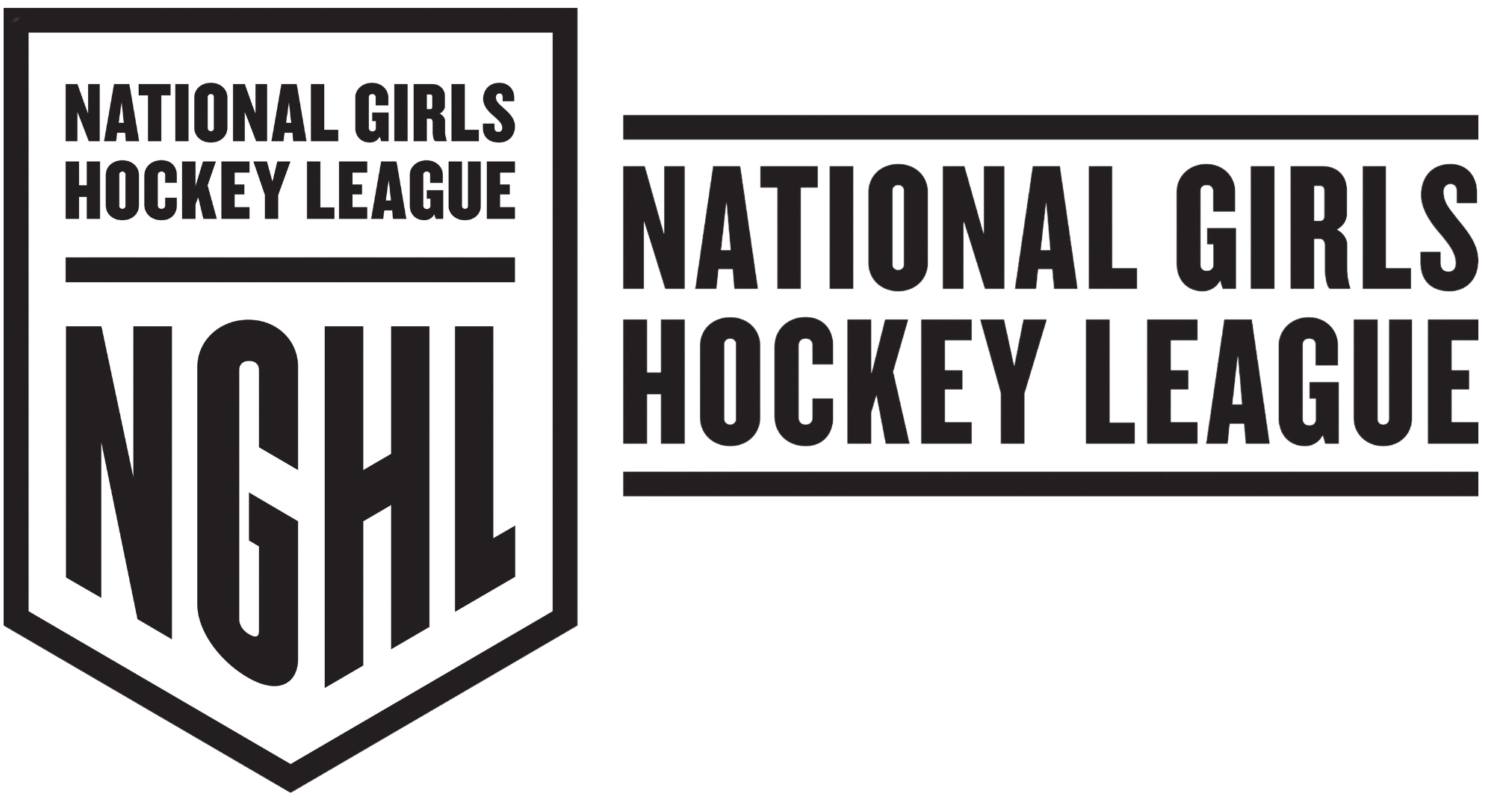11/23/2022
Ann Arbor, MI – An affiliate of Black Bear Sports Group, Inc. (“Black Bear”) has taken over the operations of the Ann Arbor Ice Cube, in Ann Arbor, MI (the “Arena”) effective November 2022. The Arena features three ice sheets, a gym, a medical practice within the University of Michigan medical network, and a pro shop. The Arena is home to the Ann Arbor Figure Skating Club, the Ann Arbor Amateur Hockey Association and one of the largest adult hockey leagues in the state. Black Bear, the largest owner-operator of ice rinks in the U.S., was founded by CEO Murry Gunty in 2015.
“Michigan is a market we have been exploring and believe is ripe for consolidation both at the rink and club level,” said Murry N. Gunty, Founder and CEO of Black Bear. “This state continues to produce some of the top talent in both hockey and figure skating and we are thrilled to bring our leagues and tournament business to Ann Arbor.”
The Ann Arbor Ice Cube was built in 1995. It was previously the headquarters of USA Hockey.
“Part of Black Bear’s mission at the Arena will be to preserve and extend the viability of this arena for the long-term,” said Ryan Scott, Vice President at Black Bear. “We have acquired many rinks that are 25-30 years-old that are still so important to the community but also have aging equipment that requires specialty knowledge. We have a strong operating team and look forward to managing the Cube long-term.”
About Black Bear Sports Group, Inc.
Black Bear Sports Group, Inc. is a privately held company formed by Murry Gunty and Blackstreet Capital Holdings, LLC in 2015 that seeks investments in sports and entertainment facilities, teams, and youth sports events. Black Bear arenas are clean, professionally managed, and offer world-class recreational programs. Black Bear focuses on ice arenas in metropolitan areas with compelling demographics, markets with a National Hockey League club presence and arenas with existing youth hockey clubs. Black Bear not only features the ability to acquire healthy and stable arenas, but also the expertise required to turn around mismanaged or under-performing facilities. The largest owner/operator of ice rinks in the U.S., Black Bear’s footprint totals 33 facilities across the United States with 62 sheets of indoor ice, four indoor turf fields, 25 youth hockey clubs, four youth hockey leagues (Atlantic Hockey Federation,
Atlantic Girls Hockey Federation Tier 1 Hockey Federation, and National Girls Hockey League), one tournament business, and four Junior “A” hockey franchises with membership in the United States Hockey League, North American Hockey League, USPHL-NCDC and the Eastern Hockey League.
Source: Black Bear Sports Group
11/11/2022
Blackstreet Capital Holdings affiliate Black Bear to acquire Klick Lewis Arena
Annville, PA – An affiliate of Black Bear Sports Group, Inc. (“Black Bear”) has entered into a definitive agreement to acquire Klick Lewis Arena in Annville, PA (the “Arena”). The Agreement is subject to normal course closing conditions. The Arena features three ice sheets, a bar/restaurant, pro shop and a dedicated gym for its players. The transaction also includes a partnership with the Palmyra Black Knights (“PBK”), the elite Tier I and Tier II youth hockey program. The Arena is also home to many figure skaters and recreational skaters in the area along with numerous tournaments due to its proximity to Hershey, PA. The Sellers were Harold and Chad Weaver, Founders of H.R. Weaver Building Systems and the creators/developers of the Arena. Antoine Bergeron, hockey director and the architect of the growth of the Palmyra Black Knights, will continue to lead the club and will assume a senior role with Black Bear. Black Bear, the largest owner-operator of ice rinks in the U.S., was founded by CEO Murry Gunty in 2015.
“It has been a great honor to build and own Klick Lewis as it is an important part of our community,” said Chad Weaver, Owner of H.R. Weaver Building Systems and owner of Klick Lewis Arena. “When we first conceived of the idea for the rink, we never could have imagined it would become such a popular and successful venue. While it is a bittersweet sale, we believe that our rink and all the local families will be in good hands with Black Bear.”
“Klick Lewis fits in perfectly with our other Hershey regional rinks and the Palmyra Black Knights fit in perfectly with our leagues, so this was a location that we have long coveted,” said Murry N. Gunty, Founder and CEO of Black Bear. “More importantly, the hidden gem in the transaction is Antoine Bergeron – he is among the best in the industry and we look forward to bringing the full strength of our organization to help him and his team grow PBK into a regional powerhouse.”
“I am excited to stay on board and continue to develop players in the PBK program and support Black Bear’s overall hockey business,” said Antoine Bergeron. “I believe that with Black Bears ascension program including its USHL and NAHL teams along with its elite level leagues that PBK will continue to field elite level teams and grow its already strong presence in Central PA.”
“Our mission is to continue growing hockey and ice sports in the Mid-Atlantic and are thrilled to add another Tier I franchise that we can support through our numerous junior team franchises such as the Youngstown Phantoms of the USHL,” said Ryan Scott, Vice President of Black Bear. “Under Antoine’s leadership, we also look forward to growing our league and tournament businesses in Hershey, Central PA and the rest of the Mid-Atlantic and expect to host numerous boys and girls events in Klick Lewis.”
About Black Bear Sports Group, Inc.
Black Bear Sports Group, Inc. is a privately held company formed by Murry Gunty and Blackstreet Capital Holdings, LLC in 2015 that seeks investments in sports and entertainment facilities, teams, and youth sports events. Black Bear arenas are clean, professionally managed, and offer world-class recreational programs. Black Bear focuses on ice arenas in metropolitan areas with compelling demographics, markets with a National Hockey League club presence and arenas with existing youth hockey clubs. Black Bear not only features the ability to acquire healthy and stable arenas, but also the expertise required to turn around mismanaged or under-performing facilities. The largest owner/operator of ice rinks in the U.S., Black Bear’s footprint totals 32 facilities across the United States with 57 sheets of indoor ice, four indoor turf fields, 25 youth hockey clubs, four youth hockey leagues (Atlantic Hockey Federation, Atlantic Girls Hockey Federation Tier 1 Hockey Federation, and National Girls Hockey League) and four Junior “A” hockey franchises with membership in the United States Hockey League, North American Hockey League, USPHL NCDC and the Eastern Hockey League.
Source: Black Bear Sports Group
10/11/2022
Rostraver Ice Garden, Belle Vernon, PA becomes the 5th ice arena in the Western PA/Ohio Region
Belle Vernon, PA – An affiliate of Black Bear Sports Group, Inc. (“Black Bear”) has acquired Rostraver Ice Garden in Belle Vernon, PA. The Arena features one NHL sized ice sheet, a sports pub, concessions and catering operation and a variety of meeting and banquet sized spaces.
“We are excited to be adding Rostraver Ice Garden as part of our Western PA/Ohio market growth plan,” said Murry N. Gunty, Founder and CEO of Black Bear. “Jim Murphy has done an amazing job serving the Mon Valley community citizens quality of life for many years. We are honored to be able to carry on the rich tradition of programs and events that Jim and his team
have established into the future.”
“Rostraver Ice Garden is a great compliment to our continued planned Western PA/Ohio market expansion,” said Ryan Scott, Black Bear Sports Group VP of Operations. “Together with Printscape Arena at Southpointe in Canonsburg, Palmer Imaging Arena in Delmont, Pittsburgh Ice Arena in New Kensington and Deep Freeze Ice Arena in Youngstown, the official practice facility of our own USHL Youngstown Phantoms, our Western PA/Ohio team is poised to extend our mission to provide quality programming that promotes physical activity/ healthy lifestyles and initiatives that are focused on growing ice sports participation.”
About Rostraver Ice Garden – Rostraver Ice Garden, owned by Black Bear Sports Group, Inc. is a multi-purpose facility located in Belle Vernon, a suburb of Pittsburgh, Pennsylvania also known as the Mon Valley. The arena measures 65,000 square feet and includes one NHL-sized ice rink that is converted to a dry floor event center in the spring and summer that is host to many alternative events, shows and exhibits. The facility has multiple banquet spaces/ party rooms and a catering kitchen as well as a full-service sports pub and concessions stand. The arena provides the community with various ice skating and hockey programs, regular public skating sessions and birthday parties, and is the hockey home arena for the Mon Valley Thunder Youth Hockey, PennWest California University Hockey Club, Ringgold High School, Elizabeth Forward High School and Thomas Jefferson High School. For more, go to www.rostravericegarden.com.
About Black Bear Sports Group – Black Bear Sports Group, Inc. is a privately held company formed by Murry Gunty and Blackstreet Capital Holdings, LLC in 2015 that seeks investments in sports and entertainment facilities, teams and youth sports events. Black Bear focuses on ice arenas in metropolitan areas with compelling demographics, a National Hockey League club presence, and arenas with existing youth hockey clubs. The largest owner/operator of ice rinks in North America, Black Bear’s footprint totals 31 facilities across the United States with 56 sheets of indoor ice, 5 indoor turf fields/non-ice surfaces, 24 youth hockey clubs, 6 hockey leagues & tournament businesses (Atlantic Hockey Federation, Atlantic Girls Hockey Federation, Tier 1 Hockey
Federation, National Girls Hockey League, Defender Hockey Tournaments, Foundry Adult Hockey) and 4 Junior “A” hockey franchises in the United States Hockey League, North American Hockey League, United States Premier Hockey League NCDC and Eastern Hockey League. For more, go to www.blackbearsportsgroup.com.
Source: Black Bear Sports Group
Bethesda, MD – The National Girls Hockey League has launched its next generation website. The new site development has been in process for several months in collaboration with its creative partner IOI Ventures.
From overwhelming to sleek and efficient, IOI has produced a website that is not only functional, it is strategic. The ability to navigate the site with ease all while gathering pertinent information along the way is unmatched. The inclusion of dynamic imagery, interactive icons, and a comprehensive CTA strategy makes the site’s user experience enjoyable.
“The site was created with our community of clubs in mind, for hockey people, by hockey people. With our commitment to leading edge multimedia and ongoing creative visual additions this new site is certain to provide a best-in-class browser experience and highlight our community of clubs who are committed to the NGHL,” said NGHL’s Leslie Case. “With the GameSheet embed in the site, we provide the member teams, players and families user friendly navigation and real time schedule, stats and standings.”
About National Girls Hockey League – In its 4th year, the National Girls Hockey League (“NGHL”) is is dedicated to the promotion and growth of girls ice hockey programs across the nation and supports its member clubs’ vision for player-focused development and progression to the next level. The NGHL hosts member teams as well as guest teams from around the country. Its offerings comprise league play, showcases, and exposure clinics and have teams competing at the 10U through 19U levels at Tier I and Tier II. The NGHL provides high-quality league games and showcases for over 500 teams from over 30 organizations across 20 Mid-Atlantic states.
About IOI Ventures – IOI Ventures works with small to mid-sized businesses to maximize ROI and increase sales by improving digital marketing and sales strategies. IOI represents a new approach to marketing that connects the dots to sales and focuses on lead generation and revenue growth. The digital marketing team analyzes a clients goals, and creates comprehensive and effective go-to-market plans. IOI stands for Integrity Over Income and is the backbone of the business. They see themselves as an extension of their partner’s team and believe marketing shouldn’t be a guessing game. They’re a growing team of data-driven digital marketers and sales operations professionals that tie investments back to revenue.
Furthering a youth hockey career into college is an exciting decision for many athletes. There are four NGHL member teams who have 19 signees headed all over the United States and we are excited to share where they are going.
The NGHL teams that have signees for the month of September are the Syracuse Valley Eagles, Ironbound Elite, Lovell Academy Lions, and Florida Alliance.
The Syracuse Valley Eagles have eight college commits who decided where they will be headed for their college careers. Addie Alvarez will be joining the RIT Tigers, Carolyn Bourgeault heads to Concordia University in Wisconsin, Harper Weisbeck committed to Manhattanville College, Drew Kopek to State University of New York (SUNY) at Cortland, Helen VanDamme to Oswego State, Jordan Caroccio is off to SUNY Canton, Julia Peters to Stonehill College and Madison Flory will be headed to Western New England University.
Ironbound Elite also has seven commits headed to schools all across New England and the East Coast. Aislin Tobin-Fretwell is off to New York to attend Queen’s University, Alex Degan to Long Island University, Cassidy Yaun is off to Connecticut to play at Trinity College, Cassie Borowski to Suffolk University, Lilli Warnock has committed to Plymouth State University, Maddie Smith is joining the Sacred Heart University Big Red and Pulse Drying-Andersen is off to Stonehill College.
Lovell Academy Alliance will have four Division I and III commitments for the month of September. Adreanna Doucette and Hayley Kelleher will both be joining the Clarkson University Golden Knights, McKenzie Brown committed to Nazareth College and Kieren Poulin will be headed to UMASS Amherst.
Florida Alliance will have two commitments: Alexis Fitzsimmons is headed to Norwich University and Frankie Miller is off to Adrian College in Michigan.
Congratulations to all of these commitments from the month of September and we wish you all the best of luck!
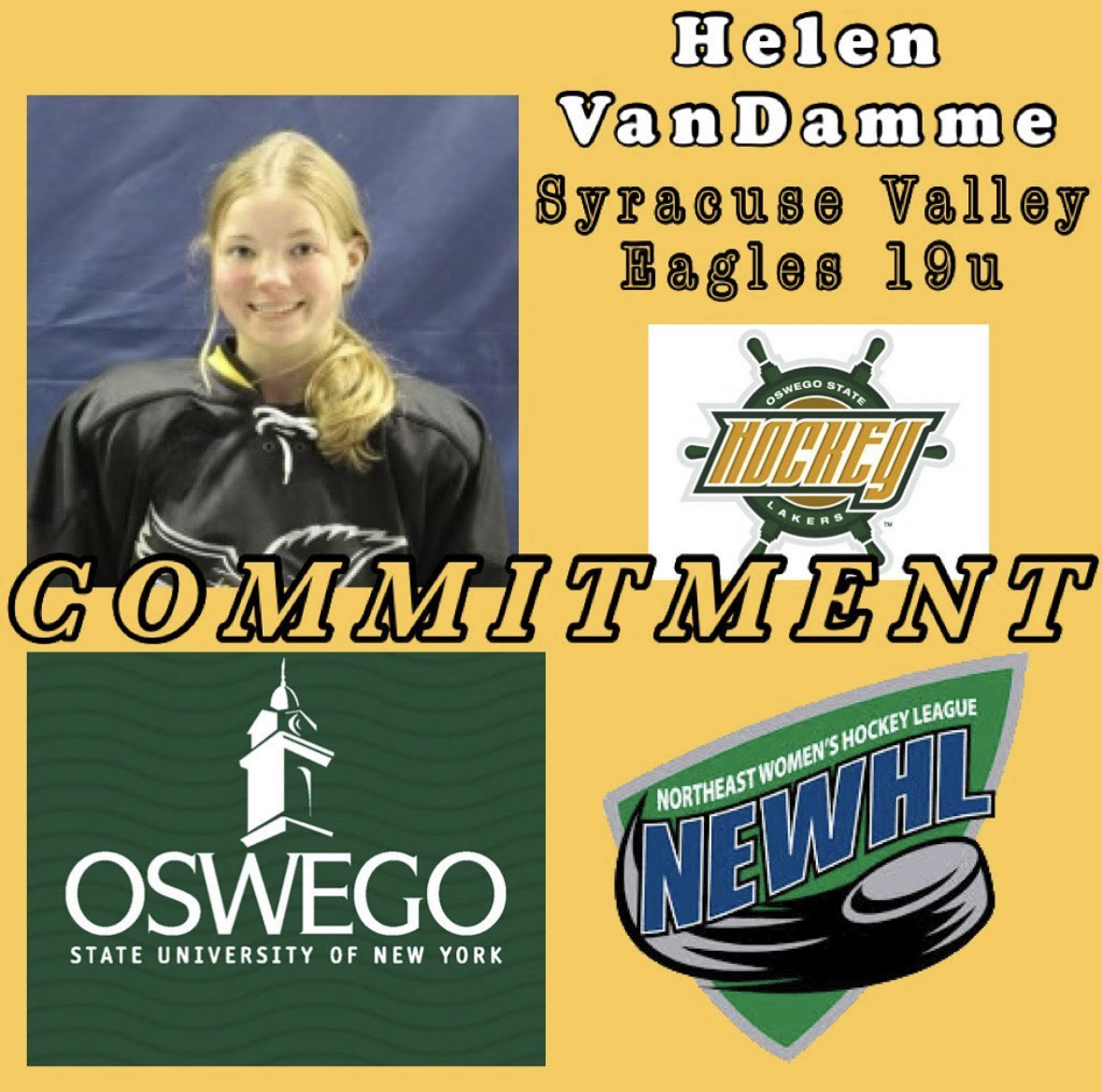



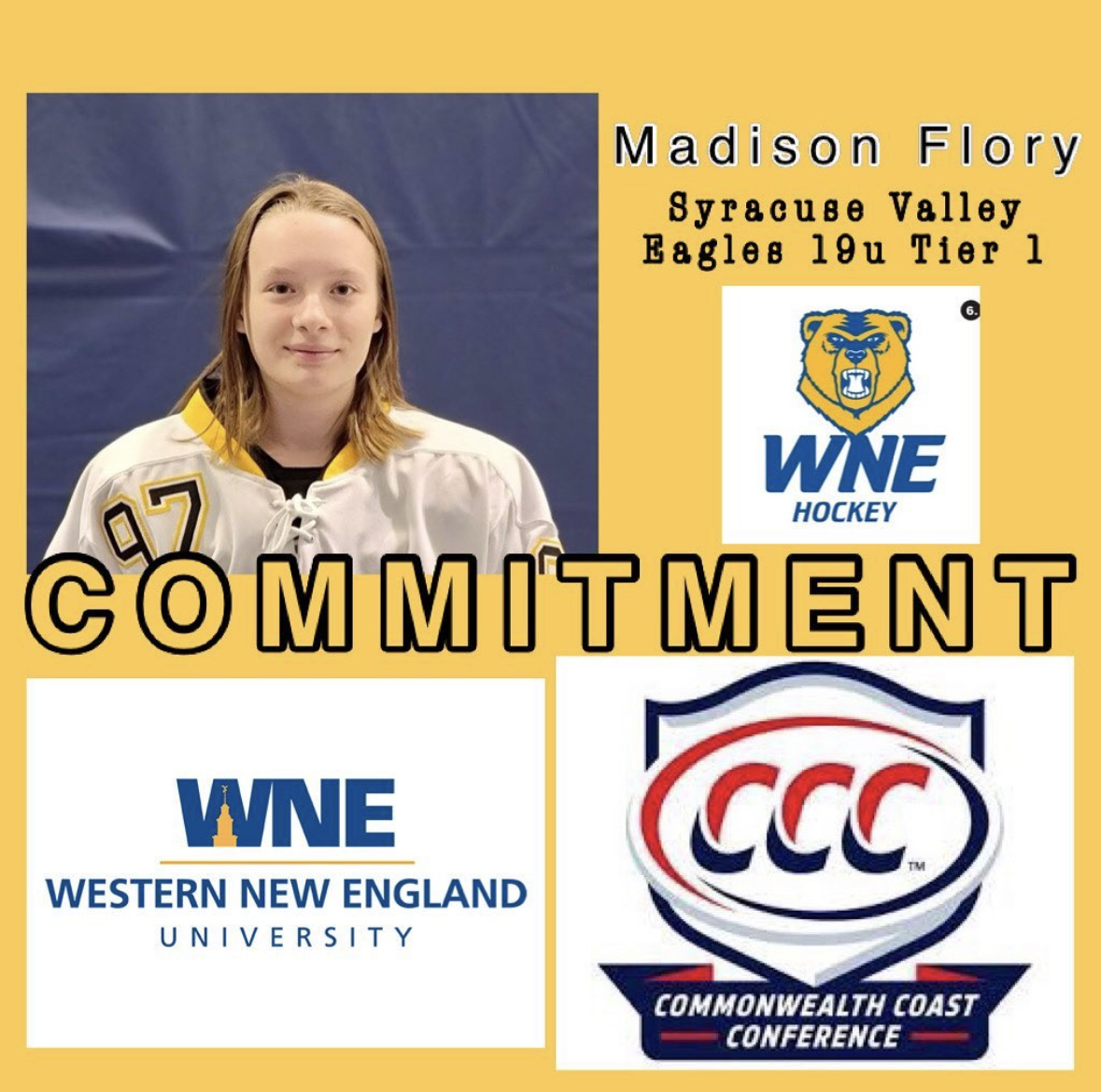

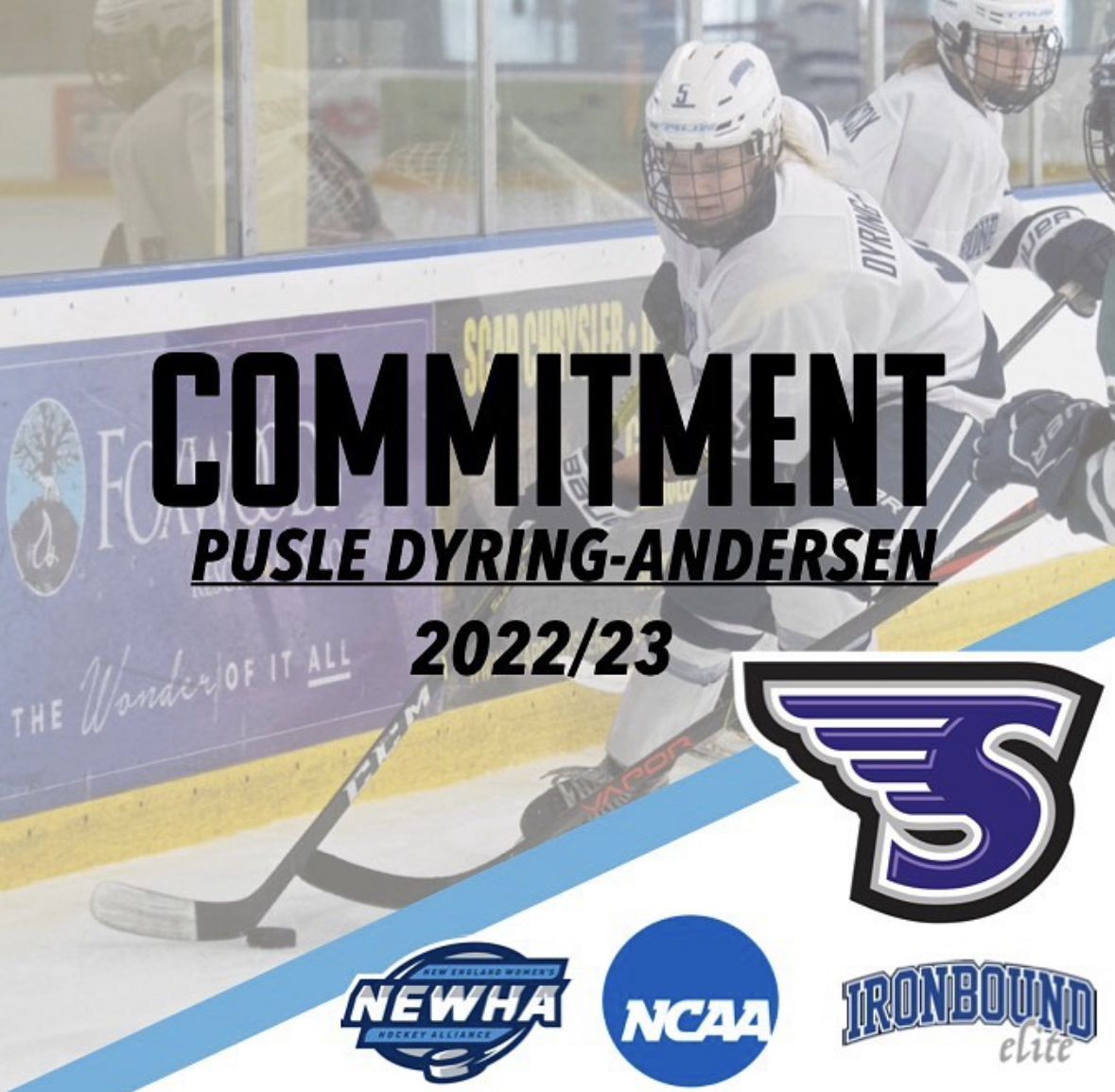





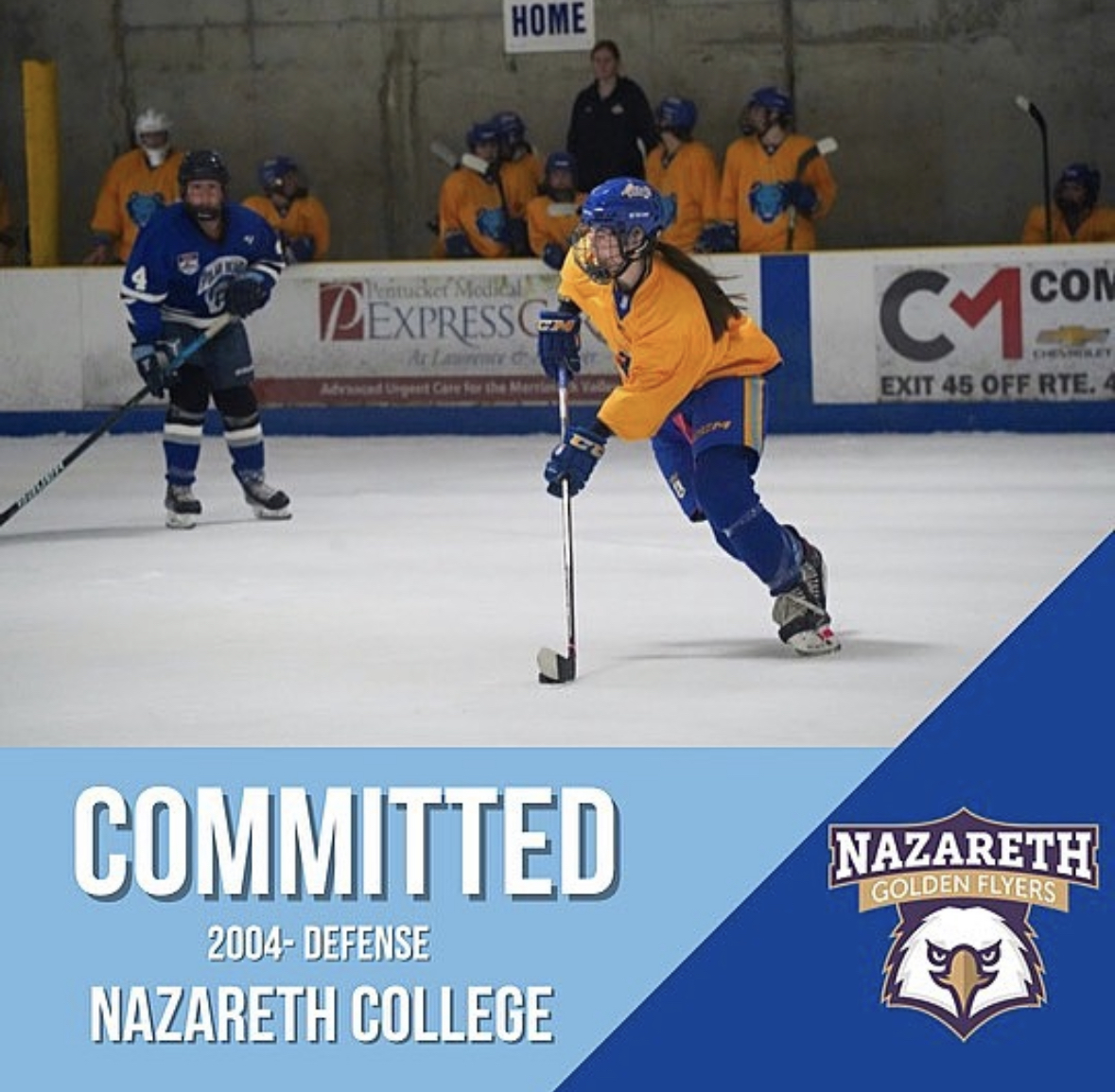
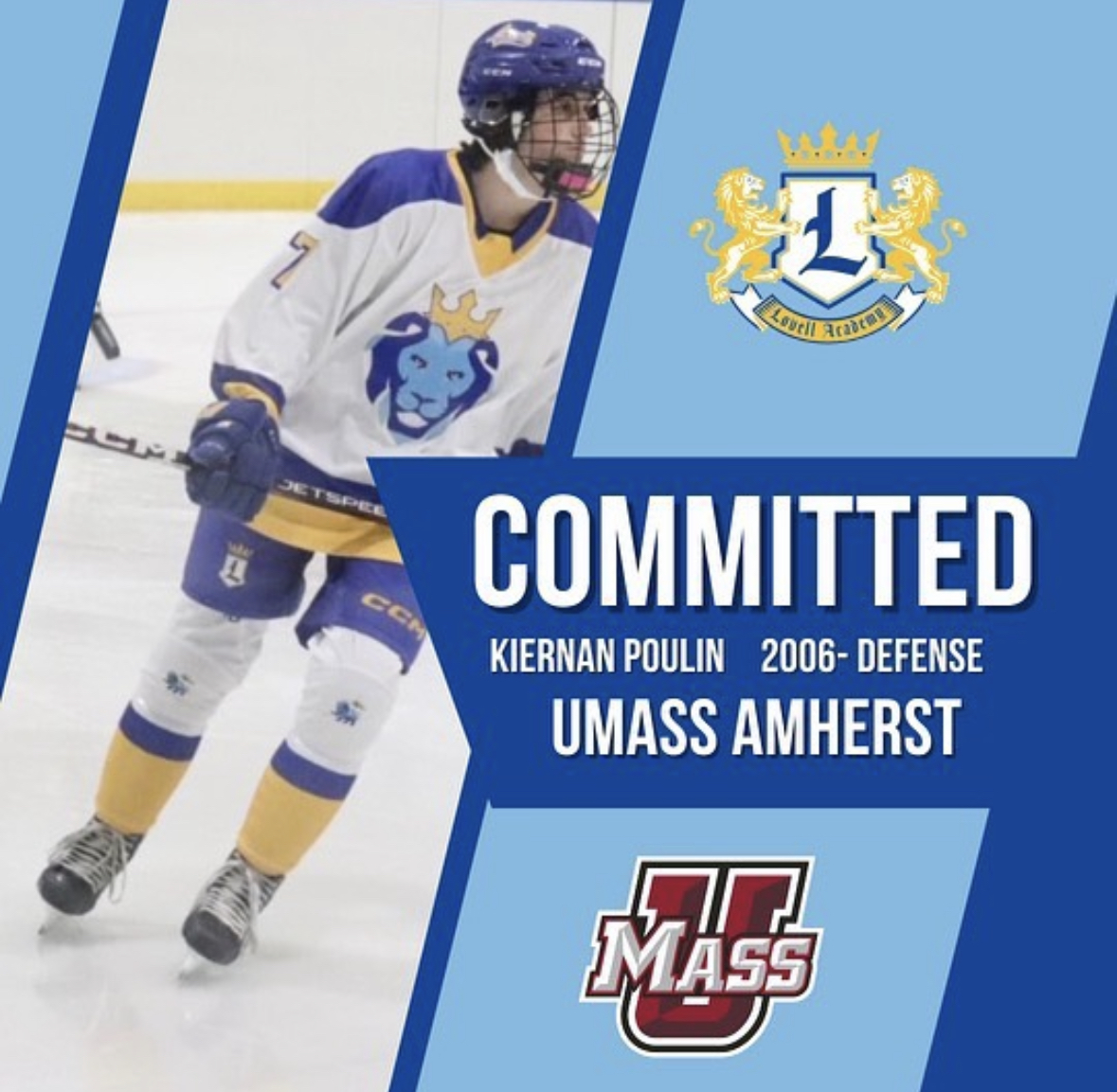

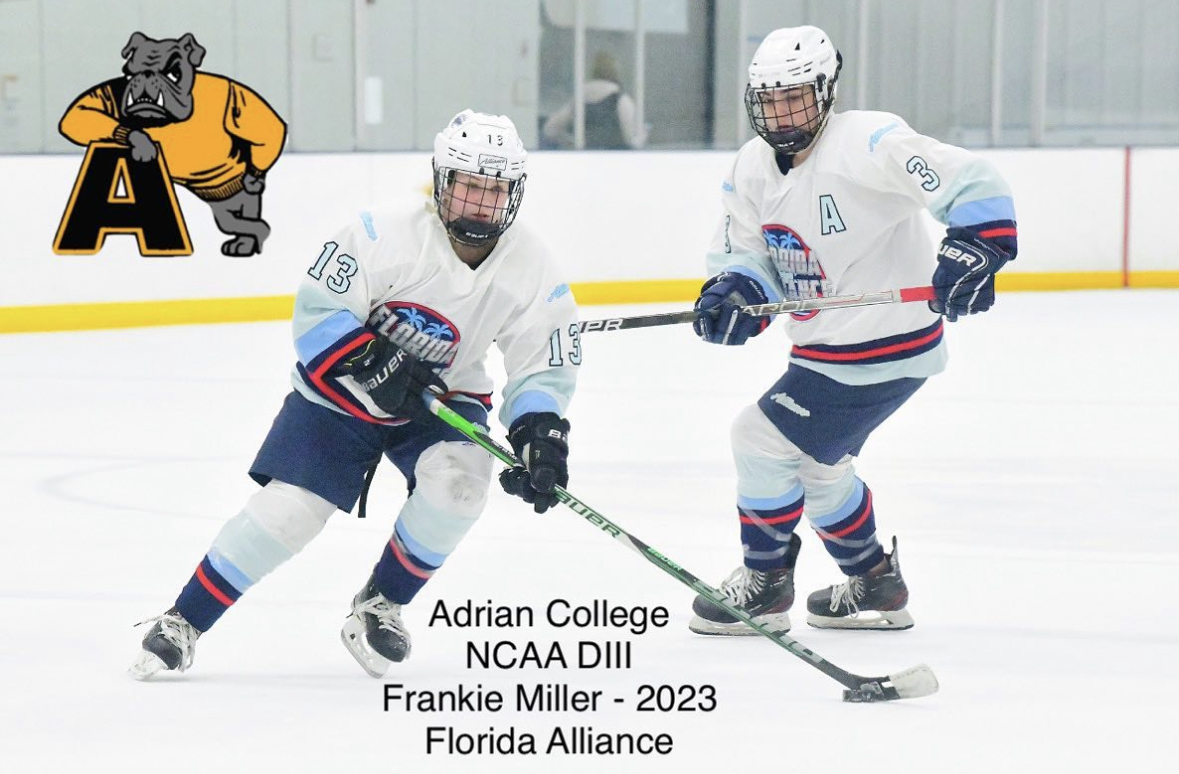

Repost from MyHockeyRankings
Nothing is more indicative of the health and growth of girl’s and women’s hockey in the United States than the way the sport has bounced back from the pandemic. The game is healthier and growing faster than ever.
And more growth means more opportunities.
“Even though New England and the Midwest generally still tend to be the most popular areas for {girls’ hockey}, the sport is really growing in places like Florida, Colorado, and other areas that aren’t as traditional for hockey,” said Katie Zimmerman, head coach at Western New England University, a relatively new NCAA Division III program. “The participation numbers continue to rise every year, and there are new teams popping up at the college level all the time. As long as there is evidence of continued growth at the grassroots level, there will be a market demand for it and new opportunities for the players.”
While USA Hockey’s overall registrations did not return to pre-COVID numbers for the 2021-22 season, USA Hockey girl’s and women’s registrations grew about 5 percent that season from where they were before the pandemic in 2019-20. That included 25-percent growth over the COVID-impacted 2020-21 campaign, which of course saw hockey registrations drop throughout North America.
There were nearly 88,000 USA Hockey-registered players for 2021-22, compared to about 70,500 the previous year and 84,100 in 2019-20. Participation in USA Hockey-sponsored programs for girls and women has increased more than 33 percent since the 2012-13 season, during which there were about 65,700 registered players.
Exposure to High-Level Hockey Fuels Growth
The growth of girl’s and women’s hockey participation in the U.S. can be attributed to many factors and the efforts of multiple organizations.
First and foremost, the rise of women’s hockey as a prominent Olympic sport over the past 25 years has been instrumental in driving participation. The epic duels between the United States and Canada have become some of the most-anticipated and viewed events of the past several Winter Olympics.
That exposure, along with the efforts of the world’s top players to form viable professional leagues has provided more opportunities for young athletes to see the game played at the highest levels and connect with the sport’s top players at fan-friendly events that are held all over North America.
The interest in Olympic women’s hockey has led to more nationally televised events such as the International Ice Hockey Federation’s Women’s World Championship, the U18 Women’s World Championship and the professional Premier Hockey Federation’s Isobel Cup championship game. More television and media coverage of women’s hockey normalizes participation in the sport and provides young players with role models to look up to while also encouraging long-term goals and aspirations connected to lifetime participation in the sport.
Likewise, there is more access to women’s college hockey via television, social media and the internet than ever before, which exposes young players to a long-term hockey opportunity they may see as more tangible and realistic than playing professionally or for the national team. Most young people hope to attend college, so if hockey is viewed as a vehicle that helps reduce the cost of attendance, provides an opportunity to attend an institution that might not otherwise be a realistic option or a way to enhance the overall college experience, that is more likely to lead to younger players making a long-term commitment to the sport.
In addition, the numerous opportunities for interested young athletes to try hockey at little or no expense via learn-to-play programs have provided thousands of girls with easy and inexpensive ways to experience hockey first-hand. Learn-to-play clinics are available at events held as part of the just-completed IIHF Girls’ Hockey Weekend and through various grassroots programs offered by National Hockey League teams and USA Hockey.
The increased accessibility to watching the sport being played at the highest levels lights the spark and fuels curiosity, while the ease of access to inexpensive opportunities to participate has fostered continued growth within the youngest age groups. Greater participation leads to more opportunities as those players grow older – opportunities to play against better players, travel to new areas where there may be more and better competition and be seen by coaches and scouts who can provide still higher-level opportunities.
Growth is Happening Everywhere at All Levels
The growth hasn’t been limited to traditional hockey markets, which bodes well for the future of the sport. While hockey participation continues to grow among girls in hotbeds such as Minnesota, Massachusetts, New York, Michigan, and Wisconsin, states such as Colorado, Pennsylvania, Illinois, Connecticut, California, Alaska and New Jersey each boasted more than 2,000 registered participants in 2021-22.
Perhaps most impressive is the nearly 1,400 players registered in both Florida and Texas and the huge growth in states such as Washington (87 percent), Nevada (83 percent), South Carolina (55 percent), Oregon (55 percent), Arizona (41 percent) and North Carolina (38 percent).
Of course, what do Washington and Nevada have in common? New NHL franchises that have a vested interest in growing the game at the grassroots level.
Just as there are more higher-level club and high-school opportunities becoming available to coincide with the increased interest and growth at the younger levels, new varsity college hockey opportunities at the NCAA Division I and III levels seem to present themselves annually. A great indicator of the overall growth in girls’ hockey is the diversity in hometowns that can be found on college hockey rosters. Pull up just about any D1 or D3 roster and you will see players from places such as Maryland, Virginia, Colorado, Nevada, Texas, California and Arizona.
At the D3 level, 71 teams competed during the 2021-22 season. There were only 67 programs in 2019-20, with one of those institutions being forced out of business because of COVID. Thus, five new Division III varsity programs have been added in the last few years.
There are 41 teams competing at the Division I level, which means there are about 110 combined D1 and D3 NCAA varsity collegiate programs that are potential landing spots for young players hoping to continue their careers beyond high school and club hockey. Division I grew beyond 40 members when the lone competing Division II programs – Franklin Pierce, Post, St. Anslem, and St. Michael’s – agreed to join up with new D1 addition Long Island University to form the New England Women’s Hockey Alliance and compete at the Division I level.
Stonehill College will join that league next year, bringing the total of Division I programs to 42. Once the number of D1 programs eclipsed the 40-team mark, the NCAA decided to expand the national championship tournament from eight to 11 teams.
While there are more opportunities for girls at the club, high school, prep school and college levels than ever before – and those opportunities continue to rise – relatively speaking, the varsity opportunities the collegiate level still are pretty sparse when the number of overall players potentially competing for those spots is taken into account.
Looking at NCAA Division I hockey, where it has been estimated that there is about a 60/40 split as far as the percentage of American vs. Canadian players, it has been suggested that slightly fewer than 2 percent of all North American players between the ages of 14 and 19 will ascend to that level. Assuming that there are approximately 28 players on an average D1 roster, with 42 sponsored programs and a theoretical 25-percent player turnover rate annually, there should be about 300 spots available for incoming freshmen every year.
Calculating the math for annual Division III openings based on 25-player average rosters shows that there should be about 445 spots available for incoming freshmen annually. That means there are approximately 750 total available opportunities each year for incoming first-years hoping to play NCAA Hockey.
For the 2021-22 season, there were 70,000 girls ages 18 and younger registered by USA Hockey. About 4,200 of those were either 17 or 18 years old, and nearly 21,000 fell between the ages of 13 and 19. Division 1 programs can start committing players on Aug. 1 prior to their junior years in high school, but to simplify the math let’s just look at the oldest players in that range.
If all 300 Division I opportunities available that year went to American-born players in that 17-18 age range, 7 percent of those players would move on to play for D1 programs. The percentage jumps to 18 percent when the 750 available D1 and D3 openings are considered.
That doesn’t tell the whole story, however, since it doesn’t account for the Canadian players who also might be seeking those opportunities. Taking the estimated 60/40 split between the two countries at the Division I level into consideration leaves only 180 available slots for those same 4,200 American-born players, dropping the percentage of Americans who will play D1 hockey to roughly 4 percent.
If the nationality split is the same for Division III programs, the overall percentage of 17- and 18-year-old American-born players who will get to play NCAA hockey at any level is around 11 percent. Keep in mind that more and more European players are being recruited each year, so those percentages are probably somewhat inflated, and the number of participating players and available pots will fluctuate every year.
There have been far fewer spots available for incoming freshmen ever since players who were on college rosters during COVID were granted an extra year of eligibility. The glut of players returning for their fifth years should disappear in two years.
“Even though there has been rapid growth and many more opportunities, the women’s hockey world is still very small,” Zimmerman said.
Find the Situation That Maximizes Your Odds
Those statistics are not intended to dissuade any players or families from entering the world of girls’ ice hockey. Hockey is a wonderful sport, and players will benefit mentally, physically and emotionally from their participation while making new friends and learning tangible life lessons such as the importance of teamwork, discipline, work ethic, and communication in whatever they pursue.
Instead, the information is presented to educate those players – and families of players – who have shown an affinity and aptitude for hockey at a young age and may be thinking about one day playing at the collegiate level. As those numbers suggest, figuring out a pathway that maximizes a player’s development, exposure, and odds of advancing to the highest level they can is essential.
“Many times, based on where players live, it may be that their local program is Tier 2 and there is not a Tier 1 option for them,” said Ashley Salerno, assistant coach at Middlebury College, which captured the 2022 NCAA Division III national championship. “That really isn’t that important to us. The level of that player’s team doesn’t matter all that much if we are talking about a really solid player. There is a lot of very good Tier 2 players. The only problem with Tier 2 is that their events tend to take place on the same weekends as the Tier 1 events we already attend since we are recruiting so many players at that level. That means there is a lot of really good Tier 2 players who are not at the events where we would see them. For those players, it’s really important that we get to see them in the summer.”
Victoria Blake, an assistant coach at Division I Sacred Heart, figures that her program’s coaches eventually see about 95 percent of the Tier 1 players in the 16U and 19U age groups during a calendar year. Some of those players may not get seen until the summer, however, because once Sacred Heart is in-season, recruiting tends to be limited to prep schools, high schools, and club teams that compete within driving distance of their Connecticut campus. This is true for most college hockey programs, particularly those with smaller recruiting budgets.
Fortunately, the Northeast and New England are hockey hotbeds, so college coaches in those areas still can see a large number of legitimate prospects compete in person during their seasons, and the heaviest concentration of NCAA varsity college programs is situated along the Northeast corridor. The Upper Midwest is another region that features a high number of hockey-playing colleges.
“We recruit both the New England prep schools as well as the public high schools,” said, Zimmerman, who also emphasized that players on her team come from all over. “That presents us with a unique opportunity here because many of the players also play split season with club teams. That allows us to see players play for different teams during the same year. We might see them play with their school teams, in a showcase and at a camp with a different group of players each time, which can be great for evaluating all aspects of a player’s game.”
Summer, Summer, Summer
Blake concurred that seeing players playing for various teams in different settings paints a more complete picture of their games and what they might bring to the program. She also emphasized the importance of the summer recruiting season for prospects from less-traditional hockey areas as well as coaches at colleges who can’t travel much during their seasons and might face budget constraints that limit the number of events they can attend throughout the year.
As Blake mentioned, the summer circuit is immensely important for players who hope to play in college but might not get seen during their seasons for various reasons. Perhaps they live in non-traditional markets, compete on Tier 2 teams that coaches don’t have the time or budget to scout, and don’t travel often to areas where it is easy for coaches see them play.
Salerno said she was on the road, mostly scouting showcase tournaments and camps, for 62 consecutive days at one point last summer, while Zimmerman mentioned five important multi-day recruiting events in June, eight in July and four in August that it would be beneficial for potential college prospects to attend.
“The summer is super important for players who are looking at our school and want to get in front of us,” Salerno said. “A lot of the events piggyback off each other since school is not in session, which allows people to plan for them farther out. They know that they can travel to an area and schedule a week or 10-day trip and maybe play in two or three events in a row. They also might be able to work in some college visits to schools in the areas where they are playing during their downtime. Our summers are very busy and productive since we often get to see the same players several times at events they attend as individuals or part of teams.”
Players who are hoping to play NCAA hockey, especially those who may not get much exposure during their seasons, should be aware of how important it is to be seen on the summer recruiting circuit. But they should also be careful not to overdo it since there is a tendency for some players to attend so many events that they get worn down and don’t always show well. It also can be extremely expensive, with showcases and camps ranging in price from a few hundred dollars to as much as $1,000 for two or three days of hockey. That’s in addition to travel expenses.
“The summer events can be pretty intense since everyone is working really hard and trying to make an impression,” Salerno said. “Sometimes it can be tough to get a great read on recruits, though, because they are playing with a different team and players than they do in-season when they practice with the same group all the time and are more familiar with the team’s coaches and systems. It can be hard to get a great evaluation when you’re watching showcase games with players who have never played with one another.”
Zimmerman echoed those thoughts about the importance of summer recruiting.
“Summer is huge for recruiting because there are so many events in a short period of time, so we can see a lot of players,” she said. “There are a bunch of camps and showcases in June and July and a lot of them are right here in Massachusetts. Players can come as part of an entire team or register as individuals, and pretty much all of the players are very good. It’s a great opportunity for coaches to watch players they might not get to see in person during their seasons.”
Instead of just playing in showcases, Salerno recommended that prospects consider participating in camps at colleges they are interested in attending or that feature coaches from schools they might be considering.
“There are a lot of good events that most of us attend and are great for players to go to,” she said, “but what’s really great about camps is that you can get better and develop while also getting seen and taking a break from just playing games. It allows you to train and develop instead of just playing game after game, which can lead to burnout and fatigue. A player I see early in the summer may look like an entirely different player or appear to be slacking off after being on the ice two or three times a day for several days straight. That makes me to wonder which player we might be getting if she ends up playing for us.”
How to Get the Ball Rolling
Regardless of whether prospective college recruits are going to be scouted during their seasons or at a summer event, the process of making their interest in a particular school known to coaches of those programs is the same. Players should send an introductory email that is personalized to the coaches two or three weeks prior to participating in an event they are likely to be scouting.
The note should be concise and include the player’s name, jersey number, graduation year, team name, and age group. It’s beneficial to include a little bit of personal information such as academic and athletic accomplishments, intended field of study, and why the school and hockey program is of interest. The player’s upcoming schedule also should be included.
While it’s always a good idea to reach out prior to an event that the coach will be scouting, a similar introductory email can be sent virtually anytime if a player wants to get on a program’s radar. Most teams have online forms players can fill out to express interest as well, but it’s usually worth following up submission of a form with a brief email.
Video also can be included in the intro email if the player won’t have a chance to be seen by the coach in person in the foreseeable future. While a fancy highlight video may catch a coach’s eye and showcase a player’s skill level and creativity, coaches are going to want to see clips from games that include full shifts and players competing in different situations.
“Whatever you send, just make it as easy as possible on the coaches,” Zimmerman said. “It’s great if you can pull out just your shifts and send a video of those, but I don’t mind if a player sends video of a full game as long as her shifts are timestamped and I don’t have to spend a lot of time searching for her and squinting to try to read the numbers on the backs of jerseys.”
Many coaches have become increasingly comfortable relying solely on video to evaluate prospects they might not be able to scout in person and even using video conferencing to get to know prospective student-athletes since that became a staple of recruiting when COVID restrictions were in place.
When sending an email, players should be aware that coaches receive many messages every day from prospective recruits and have other work-related emails to respond to as well as the daily responsibilities required to manage their programs. Most coaches take the time to read every email they receive, but they don’t always have the time to reply immediately. Players should be patient and follow up with another email a month or two later or if they are playing in an upcoming event that one of the coaches may be scouting. So How Does it All Work?
Division I programs generally begin actively scouting players earlier than Division III teams. D1 teams in the most competitive conferences may begin watching and tracking players as early as seventh or eighth grade, while other Division I programs may wait until a player’s freshman or sophomore year of high school.
Either way, coaches are not permitted to contact prospective recruits until June 15 prior to their junior year and can’t bring them to campus for a visit or make an offer until Aug. 1 of that year. Highly recruited Division I prospects are likely to be brought in for an official visit on or just after Aug. 1 and can receive a full- or partial-scholarship offer on the spot or a few days later.
Speaking of scholarships, it is a common misconception that every Division I hockey player is on a full scholarship. By rule, fully funded D1 women’s hockey programs are only allowed to award the equivalent of 18 full athletic scholarships. Those 18 scholarships can be divided up however the head coach sees fit, which means that on a team with a 28-player roster many players will receive less than full rides.
Some players might be on partial scholarships, while others may receive their books and room and board free combined with some athletic or academic money. A few players may be on partial athletic and academic scholarships that added together are close to being a full scholarships. Many coaches work closely with an institution’s admissions office to come up with the best possible combination of academic and athletic scholarship money for a recruit.
“We work very closely with our admissions office when we recruit,” Blake said. “We will try to crunch the numbers with admissions and work together to offer a player as close to a full ride as possible by stacking the academic and athletic scholarship money.” Sometimes we will come up a little short of what a player needs for her family to make it work financially, so we may ask them to do their part and work hard to get their grades up, which may get them a few more thousand dollars on the academic side. Then we will promise to match whatever they are able to get with athletic money.”
The key point for players and their parents to understand when it comes to athletic scholarships is that there is a lot more academic money available than there is athletic money, so some of the family money that has been set aside to pay for hockey might be better used to pay for some tutoring or standardized-test prep classes. It also is possible for student-athletes to receive a combination of athletic scholarship money and federal need-based financial aid.
D3 coaches recommend that players contact them the summer prior to their junior year or possibly during their sophomore year to express interest and communicate their schedule. Players should follow up occasionally to update coaches on their progress and continue showing interest. More serious discussions will take place the summer prior to their senior year. At that point, a fall or winter visit may be scheduled and the recruit might be asked to apply and offered a spot on the team for the following year if she is accepted.
There are no athletic scholarships available for Division III student-athletes, but there often are opportunities for recruits to tap into an institution’s merit-based academic financial aid as well as other types of scholarships and grants that may be available along with federal need-based financial aid. Strong academic credentials can help a recruited student-athlete offset a large percentage of the cost of attending a particular school, and many times a D3 coach can work with the admissions office to put together a financial package that makes attending the institution more attractive to a top recruit.
Unlike in men’s hockey, most women’s hockey player head right to college after their senior year of high school. Men’s players often play one, two, or three years of junior hockey after graduation before matriculating.
There has been a bit of a shift since COVID, however, as players who were on college rosters and had their seasons cut short or canceled during the pandemic have been given the option of staying in school for an extra year. When players take their fifth year, teams either must expand their rosters – more rosters mean more scratches and less playing time to go around – or limit their recruiting. That has caused more NCAA prospects to play an extra year at the 19U level or take a postgrad year at a prep school before enrolling.
“It’s definitely changed since COVID,” Blake said. “Since the players were granted that fifth year, a lot of the seniors have chosen to get started on their master’s and take the graduate route. I think from our freshman class of seven or eight kids, maybe five of them chose to come here after taking postgrad years. They’re all COVID kids who didn’t know what was going to happen when the world shut down. When they came back, we pushed a lot of them back.”
Even with that change, the pathways to college for girls are less tricky to navigate than what the boys deal with.
“It’s definitely much simpler on the girls since we don’t have the junior structure to deal with,” Salerno said.
Although the process may be simpler for the girls to navigate, that doesn’t mean it’s easy to figure out, especially for players from non-traditional markets. Those players often must make larger commitments financially and may have to travel more frequently than players in hockey markets or even drive several hours just to find a team that can develop them and provides them with an opportunity to reach their goals.
Travel hockey is a large commitment to begin with, but for the players with dreams of playing collegiately that commitment can take on a life of its own. It is a commitment that impacts entire families, so it’s important that decisions are discussed, and all potential ramifications are understood and accepted by everyone involved. There will be highs and lows and many sacrifices that need to be made along the way, so the support of friends and family is essential for any player who hopes to achieve her goal of playing NCAA Hockey.
“I’m from Columbia, South Carolina originally, so I totally get what it’s like to not grow up in a hockey hotbed,” said Blake, who played four seasons of Tier 1 club hockey with Pittsburgh Penguins Elite before competing at Division III SUNY Oswego in New York and eventually becoming a coach. “Thank God I had very supportive parents who helped me figure out what was best for me and allowed me to go where I would have the best opportunity to be successful.”
Finding those situations that provide the best opportunity for a player to develop, be successful and achieve her long-term hockey goals is the ideal plan of action for any young player who dreams of playing hockey at the NCAA level.
In August Florida Alliance parents Hunter and Cheryl Brown experienced an unthinkable tragedy – they lost their beautiful 16 y.o. daughter McKenna to suicide. As you can imagine, her teammates, coaches and families were in the process of navigating the shock, confusion, and despair of loosing McKenna when they arrived at our Dawg Daze of Summer event at the end of August.
During such a devastating time, conversations of mental health are important and valuable. We were fortunate to have Premier Hockey Federation player and Metropolitan Riveters Captain Madison Packer join us to help with this conversation. Madison has an empathic ear and a lifetime of hockey experience that our players can relate to. Madison is committed to having hard conversations about mental health after her own struggles and wanted to share her story with our players. You can read her recent interview in the UW Badgers news MyWords where Madison candidly talks about her struggles – https://uwbadgers.com/news/2022/6/13/andy-baggot-mywords-madison-packer.aspx Although Madison is not a mental health professional, she is someone our community of players can identify and connect with.
We appreciate her commitment and generosity in sharing her time with the NGHL athletes.
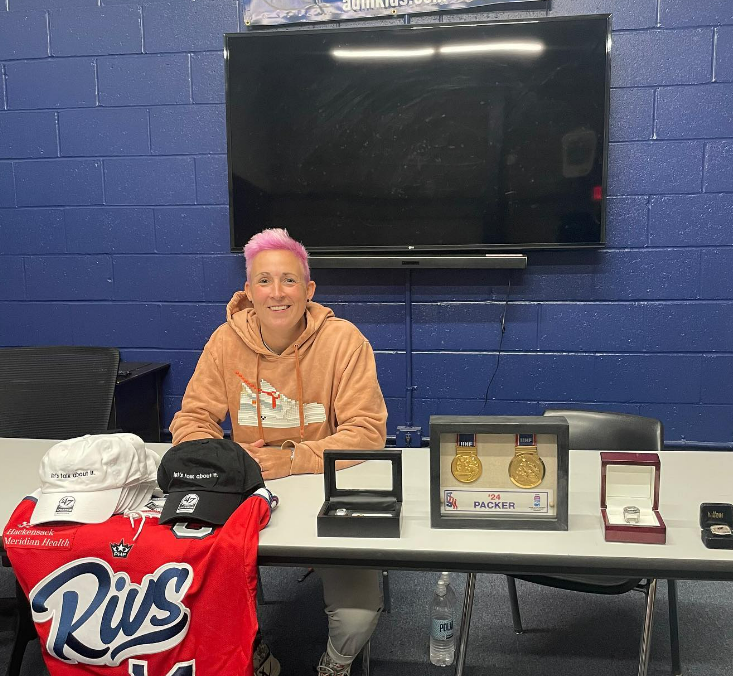
Our first event of the season – Dawg Daze – was full; we welcomed 57 teams from 12U, 14U, 16U, and 19U divisions. This event is a great way to kick start the season and gel as a team while playing talented teams.
12U Teams
- CT Ice Cats
- Florida Alliance
- Hartford Jr Wolfpack
- MidFairfield CT Stars
- Philadelphia Little Flyers
- Princeton Tiger Lilies
- Syracuse Valley Eagles
14U Teams
- Boston Advantage
- Boston Shamrocks
- Carolina Jr Hurricanes
- CT Ice Cats
- CT Northern Lights
- Florida Alliance
- Hartford Jr Wolfpack
- Ironbound Elite
- MassConn United
- MidFairfield CT Stars
- NE Wildcats
- Philadelphia Little Flyers
- Princeton Tiger Lilies
- Seacoast Spartans
- Syracuse Valley Eagles
- Team Long Island
- Valley Jr Warriors 14U
- Valley Jr Warriors 13U
16U Teams
- Boston Advantage
- Boston Shamrocks
- Buffalo Regals
- Carolina Jr Hurricanes
- CT Jr Eagles
- CT Jr Rangers
- CT Polar Bears 16-2
- Florida Alliance
- Ironbound Elite
- Mid Fairfield CT Stars 16-1
- Mid Fairfield CT Stars 16-2
- Minutemen Lady Flames
- New England Wildcats
- NS Wings
- Princeton Tiger Lilies
- Syracuse Valley Eagles
- Westchester Express
19U Teams
- Carolina Jr Hurricanes
- CT Jr Eagles
- CT Polar Bears 19-2
- Florida Alliance
- Ironbound Elite
- Lovell Academy Lions
- Mid Fairfield CT Stars 19U-1
- Mid Fairfield CT Stars 19U-2
- Minutemen Lady Flames
- New England Pioneers
- New England Wildcats
- NS Wings
- Philadelphia Jr Flyers
- Rice Prep
- Team Illinois
Our 12Us are the only division to play in the finals for this event. It was a competitive field and the Finalist and Champions were Princeton Tiger Lilies and Florida Alliance.
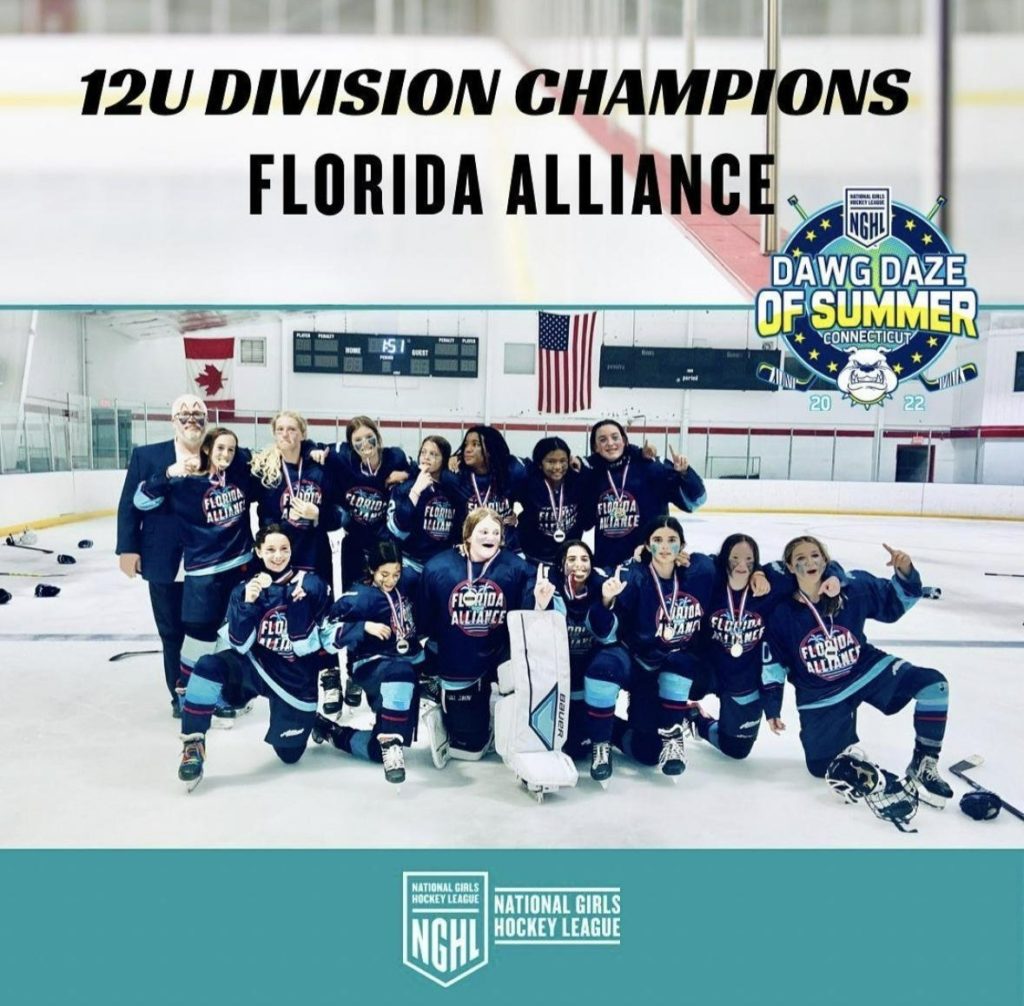
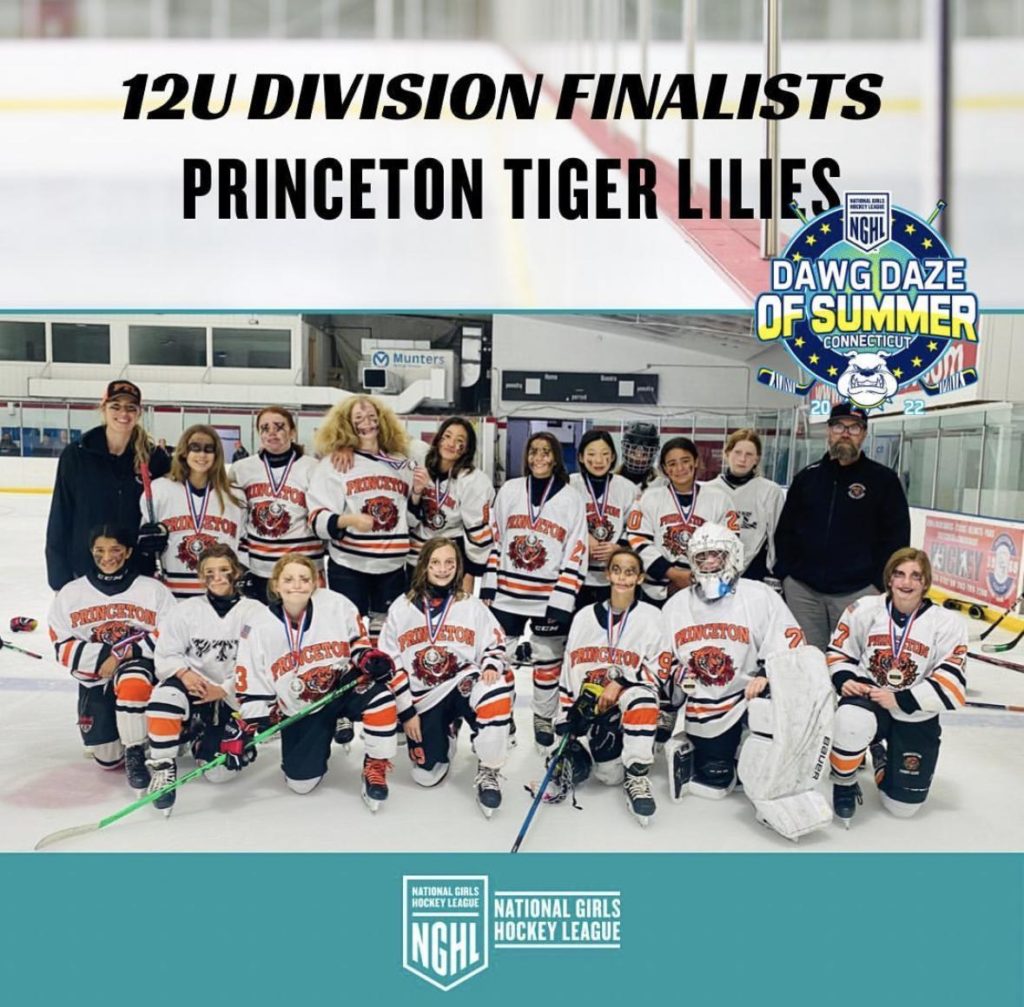
INTRO TO ACHA WOMEN’S ICE HOCKEY
On Monday, August 8th we hosted the ACHA women’s leadership team to learn more about the ACHA, the national governing body of non-NCAA collegiate college hockey. As we know, many paths exist to continue playing hockey after a youth hockey career is over, with the ACHA being a viable and growing opportunity.
ACHA Hockey has more than 461 colleges and university-affiliated teams representing 48 states and 2 Canadian provinces. With approximately 13,000 players and coaches, the ACHA has experienced tremendous growth over the past decade and continues to be a viable option for college-bound student-athletes to continue playing competitive hockey nationwide.
Contacts for the Women’s ACAH leadership are
- Taylor Hadley – D2 Commissioner/Loyola University Maryland Coach, thadley@achahockey.org
- Ken Deming – D2 Vice President/University of Delaware Head Coach, deming@udelhockey.com
- Molly Mahoney – D1 Commissioner, mmahoney@achahockey.org
- Ashley Harper – D1 Vice President/U.S. Naval Academy Head Coach, aharper@achahockey.org
Although the webinar was not recorded, we have posted the presentation slides here. Click the image below to see the slides from the presentation.

June 2022
Deep Freeze Ice Arena will be the Official Practice and Training Facility of the United States Hockey League Youngstown Phantoms
Boardman, Ohio – An affiliate of Black Bear Sports Group, Inc. (“Black Bear”) has acquired the Deep Freeze Ice Arena in Boardman, Ohio. The Arena features one Olympic ice sheet, the Extreme Air Trampoline Park and will be the official practice and training facility of the United States Hockey League’s Youngstown Phantoms, which is co-owned by Black Bear.
“We are excited to continue our Western PA/Ohio market expansion with the addition of the Deep Freeze Ice Arena,” said Murry N. Gunty, Founder and CEO of Black Bear. “This is a natural extension of our Youngstown Phantoms brand. Our team in Western PA/Ohio has a proven track record of effectively reaching into the community and providing affordable family entertainment that promotes physical activity and healthy lifestyles and together with the team from Extreme Air Trampoline Park, the Deep Freeze will be no exception.
“The Youngstown Phantoms have been a part of Mahoning Valley tradition and the United States Hockey League (USHL), the country’s top junior hockey league, since the 2009 season and previously were a member of the North American Hockey League (NAHL) for six seasons,” Black Bear Junior Hockey President Andrew Goldman stated. “With ownership of Deep Freeze, we can further invest in the Phantoms’ future including creation of a world-class fitness facility and unlimited access to practice ice.”
About Deep Freeze Ice Arena – Deep Freeze Ice Arena is the Official practice facility of the Youngstown Phantoms and Home of Extreme Air Trampoline Park. Deep Freeze Ice Arena, owned by Black Bear Sports Group, Inc. is an ice facility located on McClurg Road in Youngstown, Ohio. The arena measures 90,000 square feet where you will find unique ice hockey, figure skating, and other programs. The facility includes one Olympic-sized ice rink operating year-round. The ice rink is complimented by a concession area as well as two meeting/party rooms that support a variety of corporate and community functions as well as group outings & field trips. Deep Freeze Ice Arena’s surface provides for a host of programs, program drop-ins, leagues, and themed events. The facility is home to many user groups along with a variety of on-site businesses including Extreme Air Trampoline Park.
